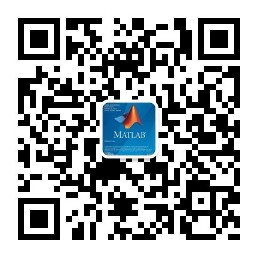举个例子,考虑一个峰值发射功率为1千瓦的X波段(10GHz)雷达和波束宽度为1°的笔形波束天线,假设在10公里距离接收到一个雷达散射截面为100平米的巨型喷气式飞机的回波。
As an example, consider an X-band (10-GHz)radar with a peak transmitted power of 1 kW and a pencil beam antenna with a 1°beamwidth, and suppose an echo is received from a jumbo jet aircraft with anRCS of 100 m2 at arange of 10 km.
接收的雷达回波功率可用式(2.11)确定。
The received power can be determined usingEq. (2.11).
天线增益可由式(1.10)估算为G = 26000/(1°)(1°)= 26000 = 44dB。
The antenna gain can be estimated from Eq.(1.10) to be G = 26,000/(1)(1) = 26,000 = 44 dB.

虽然这个例子是一个近程大型目标,但接收的回波功率只有3.07nw,比发射功率小近12个数量级!
Even though this example is a large targetat short range, the received power is only 3.07 nW, nearly 12 orders ofmagnitude less than the transmitted power!
尽管如此,在许多情况下,这种信号水平足以进行可靠的检测。
Nonetheless, this signal level is adequatefor reliable detection in many cases.
这个例子说明了雷达在发射和接收信号功率之间观察到的巨大动态范围。
This example illustrates the huge dynamicranges observed in radar between transmitted and received signal powers.
式(2.11)的一个重要结果是,对于点目标,回波接收功率随着从雷达到目标距离的四次方减小。
An important consequence of Eq. (2.11) isthat for a point target, the received power decreases as the fourth power ofrange from the radar to the target.
因此,探测给定雷达横截面目标的能力随着距离的增加而迅速降低。
Thus, the ability to detect a target of agiven radar cross section decreases rapidly with range.
雷达探测距离可以通过增大发射功率来提高,但是由于R4的依赖性,功率必须增大16(12 dB)倍,才能使探测范围扩大一倍。
Range can be increased by increasingtransmitted power, but because of the R4 dependence, the power mustbe raised by a factor of 16 (12 dB) just to double the detection range.
或者,天线增益增加4倍(6分贝),意味着天线面积增加了4倍。
Alternatively, the antenna gain can beincreased by a factor of 4 (6 dB), implying an increase in antenna area by afactor of 4.
另一方面,“隐形”飞机和其它目标车辆的设计者必须将RCS(σ)降低16倍,才能将给定雷达系统检测目标的距离减半。
On the other hand, designers of"stealth" aircraft and other target vehicles must reduce the RCS σ bya factor of 16 inorder to halve the range at which they can be detected by a given radar system.
距离方程是雷达系统设计和分析的基础工具。
The range equation is a fundamental radarsystem design and analysis tool.
该方程的更详细或更专业版本可以被表述为显示其它变量的影响,例如脉冲长度、中频(IF)带宽或信号处理增益。
More elaborate or specialized versions ofthe equation can be formulated to show the effect of other variables, such aspulse length, intermediate frequency (IF) bandwidth, or signal processinggains.
在Richards等人(2010)的书中给出了几种不同的变化形式。
Several such variations are given inRichards et al. (2010).
距离方程也为雷达系统的标定提供了依据。
The range equation also provides the basisfor calibrating a radar system.
如果对系统功率、增益和损耗进行了仔细的描述,则可以计算出已知RCS测试目标的预期接收回波功率。
If the system power, gain, and losses arecarefully characterized, then the expected received power of echoes from testtargets of known RCS can be computed.
根据这些信号处理技术,可以增加有效接收功率,从而增加可探测的距离范围;校准表格数据由观察到的接收机电压组成。
Calibration tables equating receivervoltage observed due to those signal processing techniques can increase theeffective received power, and therefore increase the obtainable range.
每种技术对回波接收功率的影响将在后面的章节中介绍。
The effect of each technique on receivedpower is discussed as they are introduced in later chapters.
——本文译自Mark A. Richards所著的《Fundamentals of Radar Signal Processing(Second edition)》
更多精彩文章请关注微信号: